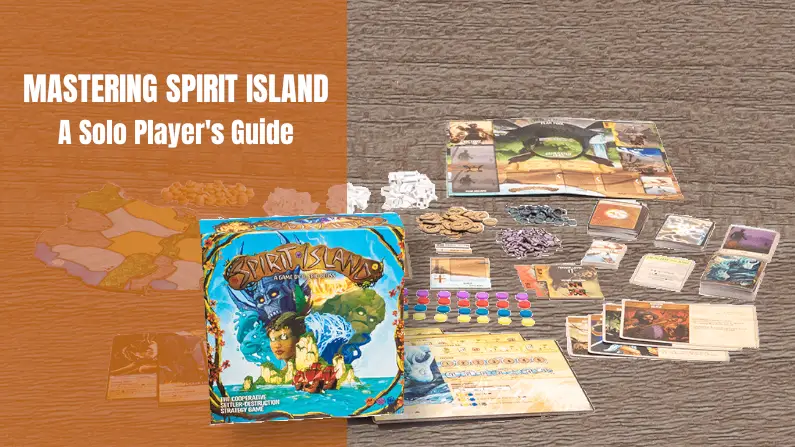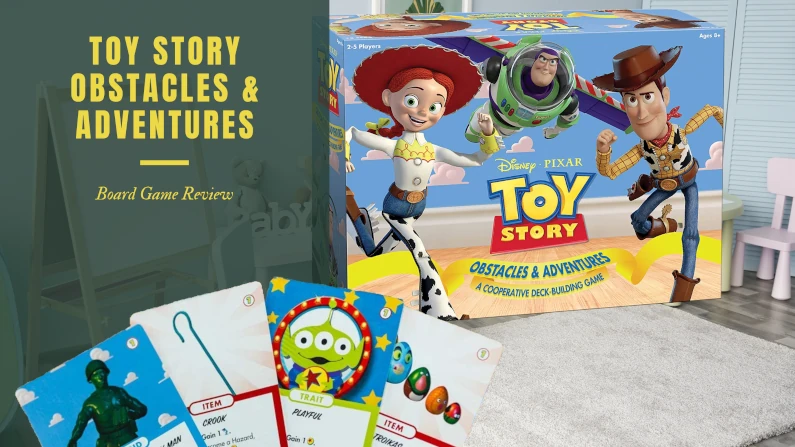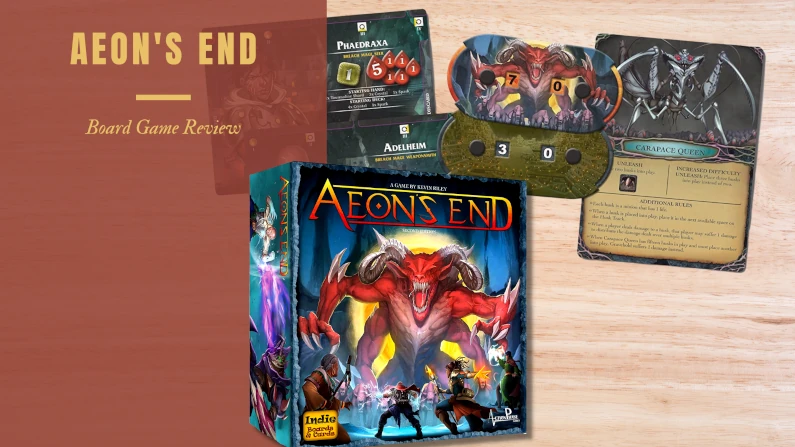Takenoko Board Game Review
We are an affiliate. We really hope you enjoy the products we recommend! When you click on links we may receive a commission or other compensation at no cost to you. Thank you for coming to our site and for any links you use. We really appreciate it.
Let’s go back to feudal Japan where you are the lowly gardener on whose shoulders peace between China and Japan rests. China has gifted a giant panda to the Japanese emperor who in turn has entrusted you with keeping the cute cuddly beast alive.
It’s up to you to keep the hungry little fella well fed whilst tending the gardens or there will be trouble.
Takenoko is an award winning, fun family tile laying board game for two to four players from age 8+. You cultivate land to grow bamboo in order to accomplish objectives.
Watch out or the panda could eat away your advantage! Once a certain number of objectives have been completed then the person with the highest score wins.
Let’s see if this game will join your collection of most loved games.
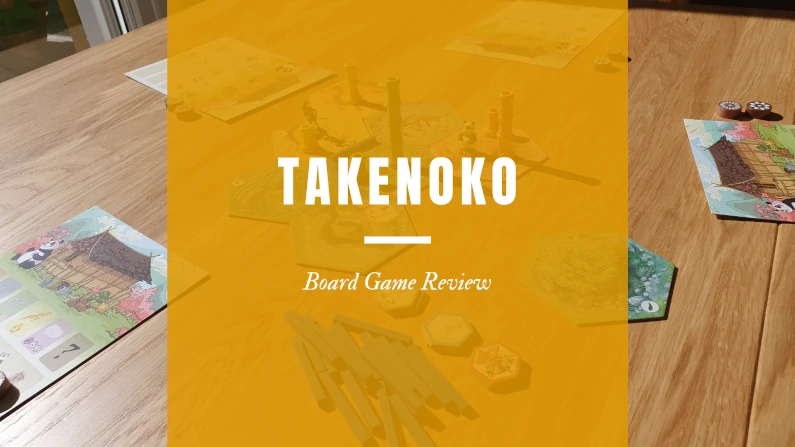
| Players | Age | Playtime (m) | Overall |
|---|---|---|---|
| 2-4 | 8+ | 45 | 7.3 |
Table of Contents
- What is Takenoko about?
- How well is Takenoko made?
- How do I play Takenoko?
- Is Takenoko worth buying?
What is Takenoko about?
This award winning game by Asmodee Games and designed by Antoine Bauza follows on from Antione’s other successes such as 7 Wonders and Ghost Stories.
The game takes about 45 minutes to play and is an easy game to learn. When we first played this game we were up and running very quickly as the instructions were easy to read and understand.
It revolves around players completing objective cards of which there are three types. These are either gardener, plot or bamboo objectives which you have a choice of selecting. Each objective has a value that once completed adds to your score.
The first person to complete a number of objectives receives an inspection from the Emperor card which adds an additional 2 to their score.
Once the Emperor has been given to a player. Each of the other players gets one more turn to try and complete as many objectives as possible.
The final turns have the goal of out-scoring the player with the emperor card. Each player’s completed objectives are then calculated and the person with the highest score wins the game.
Whilst this sounds very easy there is quite a lot more to it so let’s read on and find out about the quality and intricacies of game play.
How well is Takenoko made?
Takenoko is a very well made game from opening the box to playing with the cards, tiles and pieces you will be very happy with the quality.
| Image | QTY | Item |
|---|---|---|
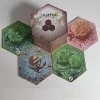 | 28 | Plots |
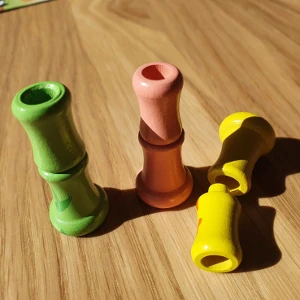 | 28 | Green Bamboo |
 | 26 | Yellow Bamboo |
 | 24 | Pink Bamboo |
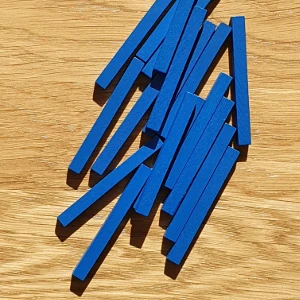 | 20 | Irrigation Channels |
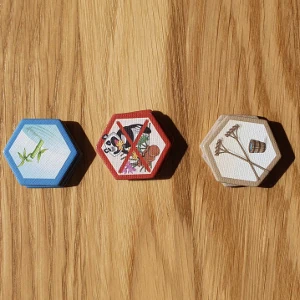 | 9 | Improvement Tiles |
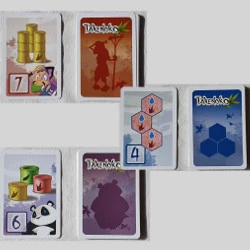 | 46 | Objective Cards |
| Image | QTY | Item |
|---|---|---|
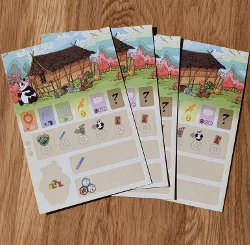 | 4 | Player Boards |
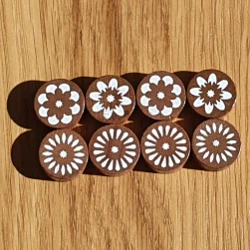 | 8 | Action Chips |
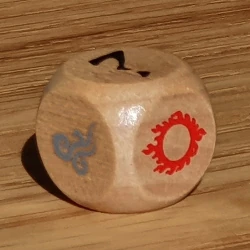 | 1 | Weather Die |
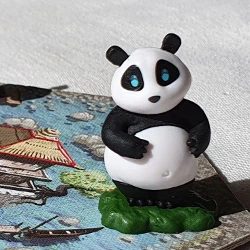 | 1 | Panda |
 | 1 | Gardener |
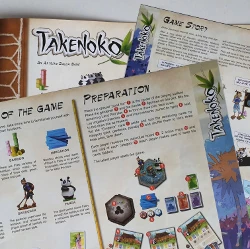 | 1 | Instruction Booklet |
The bamboo, action chips, dice and irrigation pieces are made of solid wood. The cards and tiles are made of good quality card of appropriate weight. Then there are the graphics which are superbly drawn
The objective cards are quite small at 1 3/4″ x 2 1.2″ (44mm x 64mm) known as Mini Euro. They are nice to hold, particularly for smaller hands.
If you are looking to protect them with sleeves then any Mini Euro sleeves should be fine. We use the TitanShield (150 Sleeves) Mini European Sized Board Game Card Sleeves which can be found on Amazon. They are good quality and nice to hold in your hand.
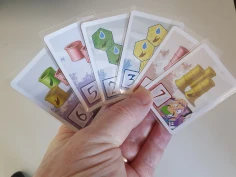
You will not be disappointed in the build quality which will last for many happy gaming sessions. With enough care this game will last for years.
How do I play Takenoko?
Preparing to play
You will need a reasonable space to be able to add plots to the initial starting tile and allow the board to grow. 28 inches or 71cm square should be enough.
To start the game you place the gardener and the Panda on the start tile called a plot.
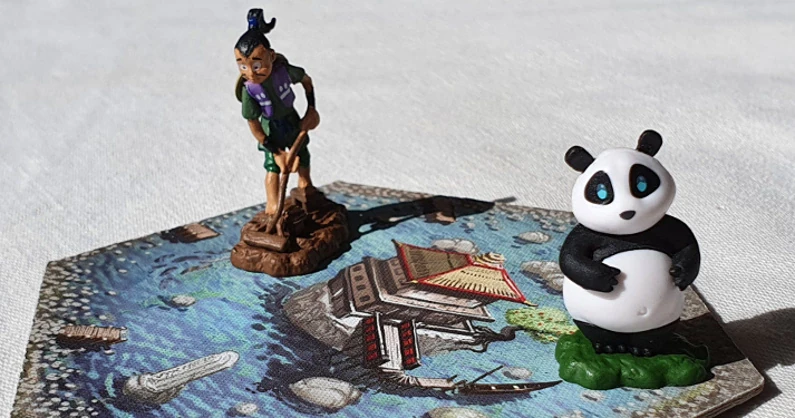
After shuffling the remaining land plots you place them face down as a draw pile. Next, sort the improvements by type and place them next to the draw pile as the reserves. Place the irrigation channels alongside the draw pile and reserves.
Remove the emperor card and place it to one side. Now shuffle each type of the objectives cards and place them in three separate piles face down.
Finally, give each player a board, 2 action chips and one card from the top of each pile of objectives. Players should keep their objectives hidden.

Playing the game
A turn has two parts:
1) The first player rolls the weather die. The die determines the weather conditions which gives the player a modifier to their go. This consists of:
- Sun: This gives the player an additional action which has to be different from their normal actions taken in the second part of their go.
- Rain: The player can add a bamboo section to any plot of their choice up to 4 bamboo pieces.
- Wind: Allows the player to take two identical actions. This is optional so each action can be different if desired.
- Storm: This scares the Panda and so gives the player the option to move it to any plot on the board. The Panda consoles itself by eating one piece of bamboo.
- Clouds: The player gets to pick an improvement chip from the reserve which he can keep or play immediately. If no improvements are available then the players chooses from Sun, Rain, Wind or Storm instead.
- Question Mark: This gives the player the choice of any of the above weather conditions.
2) Once the weather has been decided we come to the second part of the players turn: performing actions and completing objectives. The the player can make two actions from five choices:
- Choose a plot from the deck and place it on an adjoining tile to extend the garden (or board).
- Take an irrigation channel that can irrigate a tile.
- Move the gardener.
- Move the Panda.
- Pick up an objective card from the decks.
The tallest player goes first and once the weather has been decided must select two actions by putting counters on their cards. Actions cannot be the same unless the player has the Wind modifier.
Objectives
Any action should work towards furthering the completion of their objective cards, hindering the other players or ideally both.
A player can only hold a maximum of five objectives in their hand at any one time. To be able to pick up more they must complete an objective which can be done at any point during the player’s turn. To complete an objective the player simply turns the card over and places it in front of them.
Below is a description of each type of objective.
| Plot Objectives | Gardener Objectives | Panda Objectives |
|---|---|---|
 | 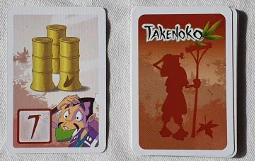 | 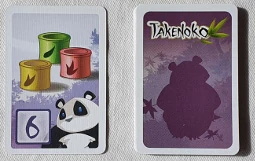 |
| These cards show a pattern of three adjacent plots of which the player must create in order to complete the objective. | These objectives indicate an amount of bamboo that must be grown either 2,3, or 4 high. The player must replicate the amount of bamboo and its colour to complete the objective. | In order to complete this objective you will need to get the Panda to eat the right set of coloured bamboo e.g. 2 yellow or 1 of each colour. When the Panda eats the bamboo it is placed in its tummy on your card. |
Once the player has taken each action and completed any objectives their turn is finished and they hand the weather die to the person on their left.
Finishing the game
The game enters the end phase once a player has completed a certain number of objectives, which is dependent on how many people are playing.
This triggers the last round of the game and the player who has just completed their last objective is awarded the Emperor card as he has come to inspect their garden.
| Players | Objectives to win |
|---|---|
| 2 | 9 |
| 3 | 8 |
| 4 | 7 |
The other players take one last turn in order to try and maximise their score and snatch the win away from the player with the Emperor card. After the last round is completed each player’s objective cards are counted and the highest wins. If there is a tie then the player with the most Panda objective points wins.
Is Takenoko worth buying?
Takenoko is very easy to learn and along with it’s short game length makes it ideal for an evening of leisurely fun. Whilst it does not have the complexity or depth of some games it does bring about a lot of enjoyment.
The game play flows quickly and so it is not long before it is your turn again. There is some level of strategy with this game but it will not be taxing.
It is best played with 3 or more players but in our experience 2 players works just fine and is how we often play it. We have played Takenoko for years and it is still one of our regular games that we enjoy playing.
If you are looking for a 2 player game then check out our Santorini or Gunslinger Vs Samurai Dice Throne Two reviews.
If you are looking for an easy, fun game to play without having to tax your brain too much then Takenoko would be a good choice. Takenoko is definitely worth buying for the enjoyment it will bring along with the way it has been beautifully crafted. This is a go to game in our family and I highly recommend it.
| Players | Age | Playtime (m) | Rating | |
|---|---|---|---|---|
Takenoko | 2-4 | 8+ | 45 | 7.3 |
Buy at Amazon |


